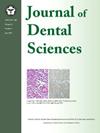Analysis of trends and disparities in domiciliary dental care distribution in Taiwan from 2018 to 2023
IF 3.4
3区 医学
Q1 DENTISTRY, ORAL SURGERY & MEDICINE
引用次数: 0
Abstract
Background/purpose
Domiciliary dental care (DDC) is essential for maintaining oral health in disabled and homebound patients who face barriers to accessing dental services. With Taiwan nearing super-aged society status, the demand for DDC is rising. However, comprehensive data on DDC availability and distribution across Taiwan are lacking. Hence, this study aimed to provide a comprehensive overview of the distribution of DDC across Taiwan's districts from 2018 to 2023, and to analyze the estimated ratios of disabled individuals per healthcare provider in each district.
Materials and methods
Data on DDC-providing hospitals and dental clinics from these years were obtained from government sources. Descriptive statistics quantified DDC facilities distribution and growth. The number of disabled individuals per district was used to estimate ratios of disabled persons to DDC facilities.
Results
DDC facilities increased from 47 in 2018 to 98 in 2023. Urban areas showed higher prevalence of DDC services, while some rural and offshore areas had limited or no access. Taichung and Kaohsiung had the highest numbers of DDC providers, while Penghu and Lianjiang had none. Ratios of disabled individuals to DDC facilities varied widely, with Taichung having the lowest ratio and Yunlin and Chiayi the highest. In conclusion, DDC availability in Taiwan has significantly increased, but geographical disparities persist.
Conclusion
These findings underscore the need for targeted policies and resource allocation to address gaps in DDC provision, particularly in underserved areas.
2018 - 2023年台湾户籍牙科保健分布趋势及差异分析
背景/目的:居家牙科护理(DDC)对维护残障人士和居家病人的口腔健康至关重要,因为他们在获得牙科服务方面面临障碍。随着台湾接近超高龄社会,对 DDC 的需求正在上升。然而,有关全台湾牙科数据中心的可用性和分布情况的全面数据却很缺乏。因此,本研究旨在全面概述 2018 年至 2023 年台湾各地区 DDC 的分布情况,并分析各地区每家医疗机构的残障人士估计比例:从政府来源获得了这些年提供残疾人士发展中心的医院和牙科诊所的数据。描述性统计量化了残疾人士发展中心设施的分布和增长情况。每个地区的残疾人数量被用来估算残疾人与 DDC 设施的比率:DDC 设施从 2018 年的 47 个增加到 2023 年的 98 个。城市地区的残疾人活动中心服务普及率较高,而一些农村和近海地区的残疾人活动中心服务有限或根本没有。台中和高雄的残疾人中心提供者数量最多,而澎湖和连江则没有。残障人士与残疾人活动中心设施的比例差异很大,台中的比例最低,云林和嘉义的比例最高。总之,台湾残疾人士中心的可用性已大幅提高,但地域差异依然存在:这些研究结果表明,有必要制定有针对性的政策并分配资源,以解决残疾人活动中心供应方面的差距,尤其是在服务不足的地区。
本文章由计算机程序翻译,如有差异,请以英文原文为准。
求助全文
约1分钟内获得全文
求助全文
来源期刊

Journal of Dental Sciences
医学-牙科与口腔外科
CiteScore
5.10
自引率
14.30%
发文量
348
审稿时长
6 days
期刊介绍:
he Journal of Dental Sciences (JDS), published quarterly, is the official and open access publication of the Association for Dental Sciences of the Republic of China (ADS-ROC). The precedent journal of the JDS is the Chinese Dental Journal (CDJ) which had already been covered by MEDLINE in 1988. As the CDJ continued to prove its importance in the region, the ADS-ROC decided to move to the international community by publishing an English journal. Hence, the birth of the JDS in 2006. The JDS is indexed in the SCI Expanded since 2008. It is also indexed in Scopus, and EMCare, ScienceDirect, SIIC Data Bases.
The topics covered by the JDS include all fields of basic and clinical dentistry. Some manuscripts focusing on the study of certain endemic diseases such as dental caries and periodontal diseases in particular regions of any country as well as oral pre-cancers, oral cancers, and oral submucous fibrosis related to betel nut chewing habit are also considered for publication. Besides, the JDS also publishes articles about the efficacy of a new treatment modality on oral verrucous hyperplasia or early oral squamous cell carcinoma.
 求助内容:
求助内容: 应助结果提醒方式:
应助结果提醒方式:


